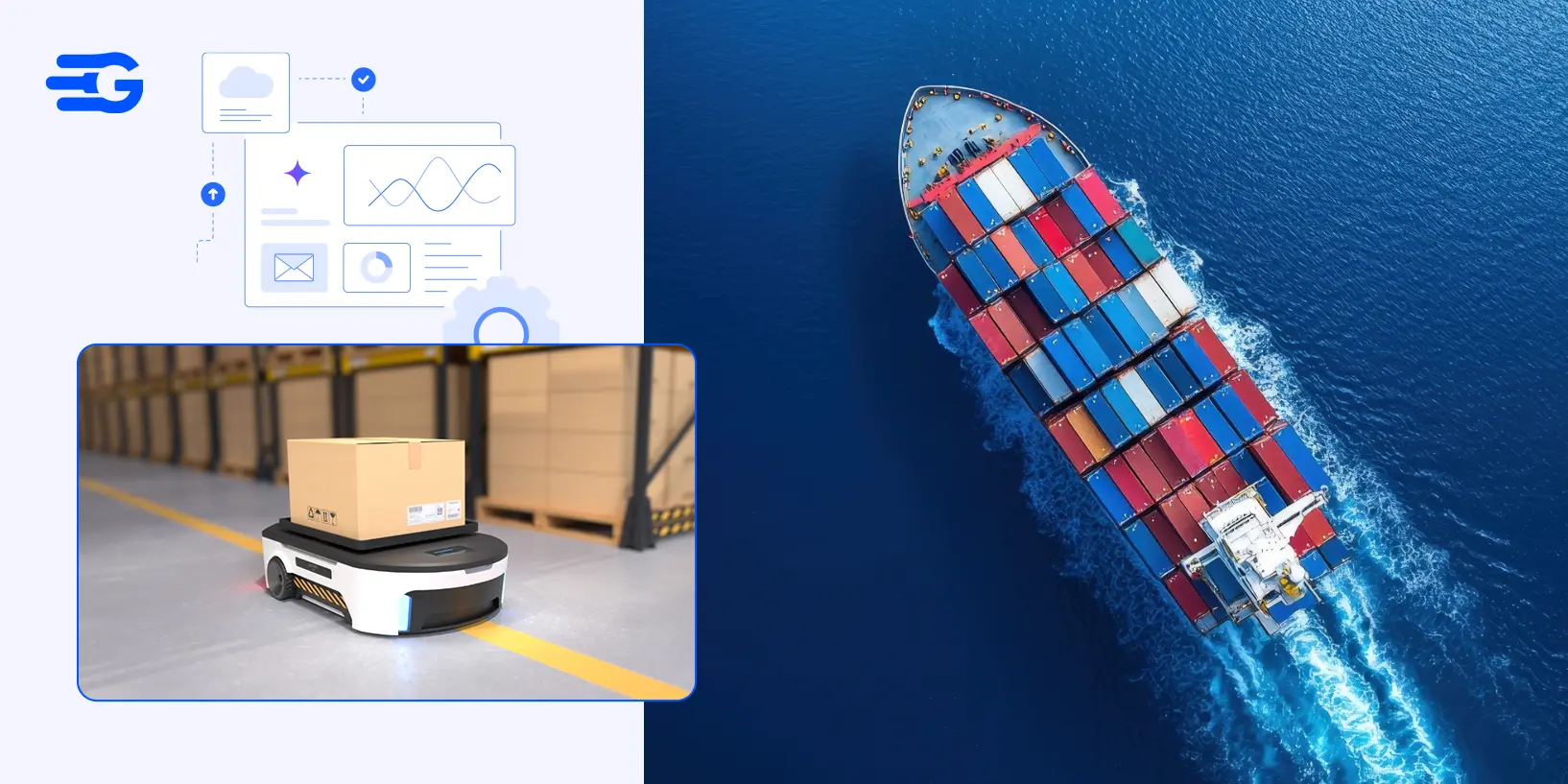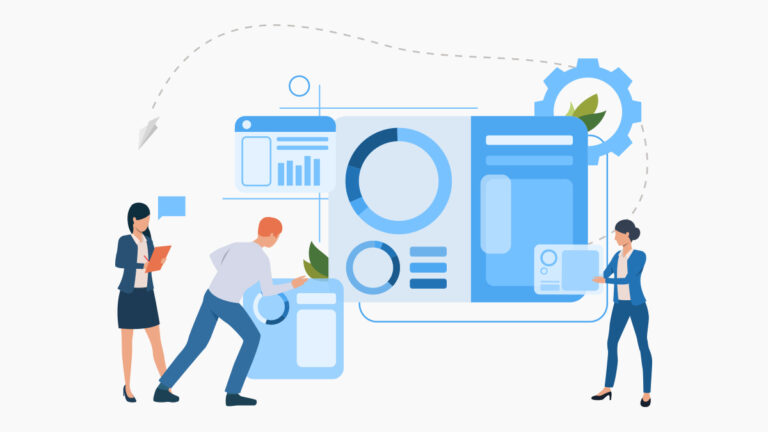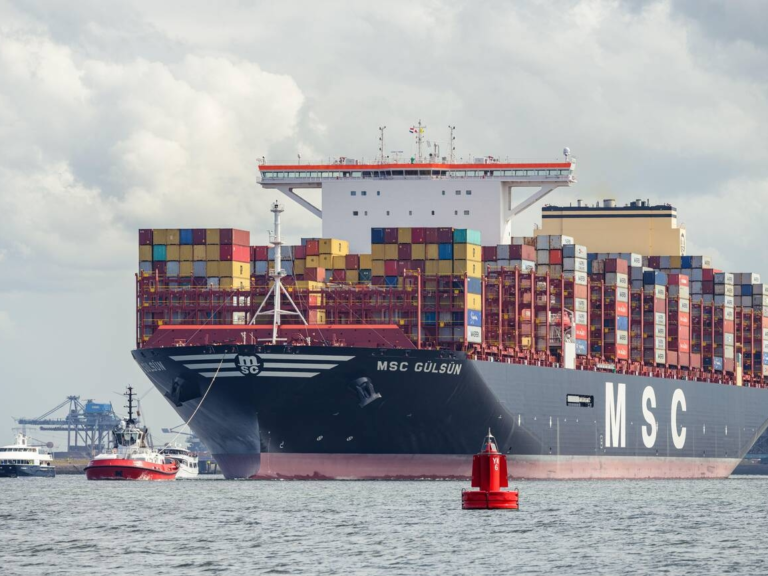What is Supply Chain Automation? Benefits and Examples
Table of Contents
Supply chain automation helps businesses improve efficiency, reduce errors, and cut costs. By automating tasks like inventory management, order fulfillment, and transportation, companies streamline operations and minimize manual effort.
With rising global logistics challenges, automation isn’t just an advantage, it’s a necessity. It speeds up processes, improves accuracy, and enhances customer satisfaction. Let’s break down how it works and why it’s essential today.
What is Supply Chain Automation?
Supply chain automation refers to the use of technology, software, and robotics to streamline and optimize various processes within the supply chain. It eliminates manual tasks, reduces human errors, and enhances efficiency, leading to faster operations and cost savings.
Before automation, businesses relied on spreadsheets, emails, and phone calls, leading to delays and errors. Now, real-time updates, predictive data, and seamless communication keep operations running smoothly.
For example, automated tracking and procurement tools help businesses monitor shipments, streamline freight procurement, and secure the best rates. Instead of juggling multiple systems, companies get accurate data and full supply chain visibility in one place.
By automating routine tasks, businesses save time, reduce errors, and cut costs, allowing teams to focus on strategy instead of paperwork.
The Importance of Automation in Supply Chains
Automation in the supply chain is no longer a luxury for large corporations. It’s a necessity. As the global market grows more complex, businesses need more efficient systems to manage their supply chains. Here’s why supply chain automation is so important:
- Efficiency Gains
Automated supply chain systems enable faster processing of orders, improved inventory management, and better coordination between suppliers and customers. Instead of waiting for manual updates, businesses can track inventory in real time and make proactive decisions. - Reduced Human Error
Supply chain operations are susceptible to human errors—whether it’s a missed email, a data entry mistake, or a miscalculation. Automation helps mitigate these risks by ensuring that processes are completed accurately every time. - Cost Reduction
One of the biggest reasons businesses automate their supply chains is to save money. By automating tasks like freight procurement, order fulfillment, and invoicing, businesses can reduce overhead costs, improve labor efficiency, and avoid costly delays. Our procurement tool, for example, automates freight negotiations, which helps businesses get better rates without spending hours on phone calls or emails. - Improved Customer Satisfaction
Faster, more reliable deliveries and transparent tracking systems help build trust with customers. When supply chain management is automated, businesses can provide customers with real-time updates, anticipate delays, and make quick adjustments to keep things on track. - Scalability
As businesses grow, their supply chain needs become more complex. Automation allows companies to scale their operations without increasing manual labor or sacrificing efficiency. Whether you’re managing a handful of shipments or thousands, automated systems handle the workload without missing a beat.
How Does Supply Chain Automation Work?
Supply chain automation works by integrating different technologies, such as Artificial Intelligence (AI), Internet of Things (IoT), and Robotic Process Automation (RPA), to streamline and optimize tasks. Here’s a simple breakdown of how it works:
- Real-Time Tracking
With tools like GoTrack, businesses can monitor the status of shipments, from the warehouse to the final delivery. This eliminates the need for manual tracking, ensuring that all shipments are accounted for in real-time.
- Inventory Management
Automated systems use sensors, RFID tags, and AI to monitor stock levels and forecast demand. This ensures that businesses maintain optimal inventory levels, avoiding stockouts or overstocking.
- Order Fulfillment
Automation tools help businesses manage order processing, reducing the time it takes to fulfill orders. With GoShipment, for instance, businesses can automate the entire order lifecycle from receiving to dispatch, reducing human intervention and speeding up the fulfillment process.
- Freight Procurement
Automation platforms like GoProcure allow businesses to source freight services automatically. Companies can evaluate multiple carriers based on performance data, pricing, and sustainability, ensuring they make the best choices.
- Data Synchronization
With all these systems working together, supply chain automation ensures that data is synchronized across all channels. Whether it’s tracking shipments, updating inventory, or managing invoices, all relevant stakeholders can access real-time data for better decision-making.
Benefits of Automated Supply Chain
- Improved Efficiency and Speed
By automating repetitive tasks, employees can focus on higher-value activities. This leads to faster order processing, quicker shipments, and more efficient overall operations. Companies like Essentra have seen a reduction in freight spending and better decision-making thanks to automated tools like GoTrack. - Cost Savings
The initial investment in automation may seem significant, but the long-term savings are substantial. We help companies save on labor costs, reduce errors, and cut down on excessive stock, making it a cost-effective solution for businesses of all sizes. - Better Transparency and Data Accuracy
Automation eliminates guesswork. It provides real-time, accurate data that helps businesses track shipments, forecast demand, and manage inventory more effectively. This leads to better customer service and fewer costly mistakes. - Scalability and Flexibility
As businesses expand, supply chain automation can easily scale with them. Whether you’re handling a small order or a massive shipment, automation tools can handle increased volumes without adding extra overhead or labor costs.
Examples of Supply Chain Automation
1. Amazon Robotics
Amazon has set a new standard in logistics with its extensive use of robotics in fulfillment centers. Their Kiva robots autonomously navigate the warehouse, picking and transporting products to human workers for packing. This automation drastically reduces the time required to process orders. For example, what used to take hours can now be completed in just minutes, allowing Amazon to fulfill millions of orders daily while ensuring that customers receive their products faster.
2. Hapag-Lloyd’s Smart Container Initiative
Hapag-Lloyd, a global shipping leader, utilizes smart containers equipped with IoT devices to automate cargo monitoring. These sensors track humidity, temperature, and movement, ensuring that sensitive cargo, such as food and pharmaceuticals, is stored under optimal conditions. For example, if a refrigerated container’s temperature fluctuates, the system alerts operators instantly, allowing quick adjustments to prevent spoilage, thereby improving supply chain reliability.
3. Port of Rotterdam’s Automated Shipping Process
The Port of Rotterdam, Europe’s largest port, uses automation to streamline the flow of cargo. Automated cranes load and unload ships with precision, while AI-driven systems manage the scheduling of vessels. This automation reduces human error, speeds up the shipping process, and optimizes port operations, allowing for faster turnaround times for ocean freight.
These examples highlight how automation is reshaping ocean shipping by reducing inefficiencies, improving shipment accuracy, and ensuring real-time visibility, which are key aspects of modern supply chain analysis.
4. Maersk’s Digital Supply Chain Platform
Maersk, one of the largest shipping companies in the world, has developed a digital supply chain platform called Maersk Flow. This platform automates various processes, including shipment tracking and inventory management. By providing real-time visibility into the supply chain, Maersk enables customers to make informed decisions and respond swiftly to changes. The automation of these processes enhances efficiency and helps reduce delays in global shipping.
These examples highlight how automation is reshaping shipping and logistics by reducing inefficiencies, improving shipment accuracy, and ensuring real-time visibility, which are key aspects of modern supply chain analysis.
Challenges in Supply Chain Automation
Supply chain automation offers many benefits, but it also comes with challenges. Here are some common supply chain automation challenges:
- High Initial Costs
The upfront investment in automation technology can be prohibitive, especially for small and medium-sized enterprises (SMEs). However, the long-term savings and efficiency gains often outweigh the initial expense. - Integration with Existing Systems
Many companies rely on legacy systems, making it difficult to integrate automation solutions. However, our platform is designed to work seamlessly with existing systems, making the transition smoother. - Employee Resistance
Automation can sometimes be met with resistance, particularly from employees who fear job loss. Overcoming this requires clear communication and training to demonstrate how automation can make their jobs easier. - Cybersecurity Risks
As businesses automate more processes, they become more vulnerable to cyberattacks. It’s crucial to have robust cybersecurity measures in place to protect sensitive data.
Also Read: Supply Chain Challenges That Need Your Immediate Attention
Future Trends in Supply Chain Automation
Supply chain automation is evolving rapidly, bringing new trends that are reshaping the industry. Here are some new trends in automation you must keep an eye for:
- Artificial Intelligence and Machine Learning
AI and machine learning are set to play a major role in automating decision-making processes, from predictive maintenance to dynamic pricing. - Blockchain
Blockchain technology is expected to revolutionize transparency and security in supply chains. By providing an immutable record of transactions, blockchain can prevent fraud and improve trust between supply chain partners. - Robotics and IoT
The use of robotics and the Internet of Things (IoT) will continue to grow, enabling businesses to track shipments in real-time, monitor warehouse conditions, and even predict maintenance needs before they arise.
How to Choose the Right Supply Chain Automation Software
When choosing supply chain automation software, here are a few key factors to consider:
- Scalability: Choose software that can scale with your business as it grows. Look for platforms that can handle increasing volumes without compromising on performance.
- User-Friendliness: The software should be easy to use and integrate with existing systems. You don’t want a solution that requires extensive training or disrupts your operations.
- Customization: Make sure the software can be tailored to fit your specific needs. Some platforms, like GoComet, allow you to select only the modules you need, whether it’s freight procurement, invoice management, or shipment tracking.
- Cost-Effectiveness: While the initial investment might be high, it’s important to look at the long-term savings. Consider not just the price of the software but also the reduction in labor costs, errors, and inefficiencies it can deliver. Choose a platform that offers value through enhanced productivity and better decision-making, ensuring that the return on investment (ROI) justifies the expense.
- Support and Integration: Look for a vendor that offers strong customer support and seamless integration with your existing systems. As highlighted in our experience, integrating new software with legacy systems can be challenging. Therefore, a platform that works well with your current technology stack will ensure smooth operations from day one.
Conclusion
Supply chain automation isn’t just for big corporations, it’s a game-changer for businesses of all sizes. It speeds up operations, reduces errors, cuts costs, and improves customer satisfaction. Companies like Amazon and Maersk have proven how automation makes supply chains more efficient and scalable.
The key is choosing the right automation software, one that fits your needs, integrates smoothly, and grows with your business. With AI, machine learning, blockchain, and IoT advancing, automation will only get smarter.






